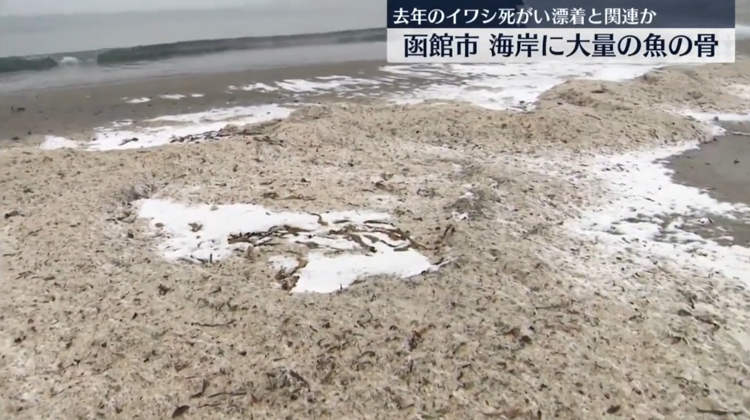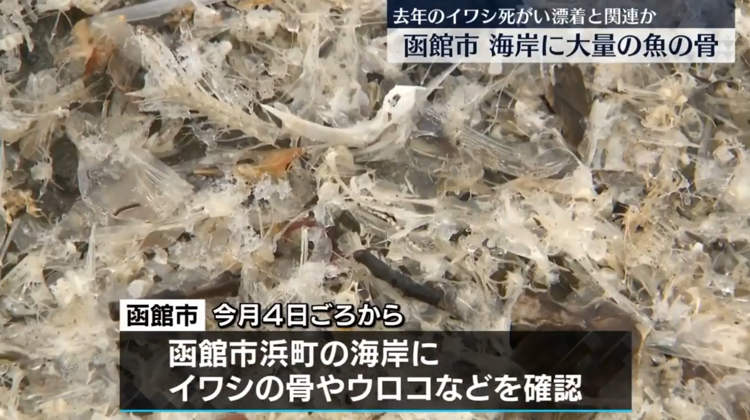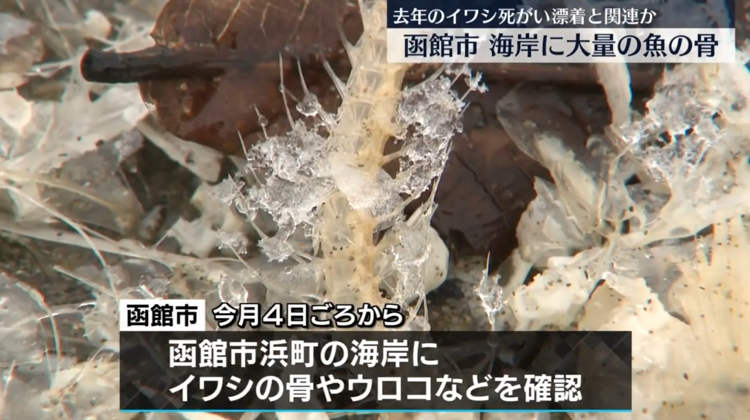A stretch of beach in Hakodate City, Japan’s Hokkaido Prefecture, has been dubbed ‘Fishbone Beach’ after being covered by a thick layer of brittle fish bones.
In December of last year, thousands of tons of dead fish were washed ashore in Hokkaido, in an event that many linked to the release of treated water from the Fukushima nuclear plant into the ocean. But that was 600 miles away, and several experts labeled the theory as completely false. About 80 percent of the dead fish were sardines and the rest were other species of small fish, like mackerel. They covered a stretch of 1.5 km along the coast of Hakodate, and the local government dealt with the fish washed ashore via incineration, leaving the ones in the water to naturally decompose. What they didn’t expect was for the fish bones to turn the beach into a veritable fish graveyard.

Photo: 日テレNEWS/Youtube
Japanese television recently showcased a 400-meter stretch of beach in Hakodate that, from a distance, looked covered by a light blanket of snow. But as the camera zoomed in, it became clear that the snow was something entirely different, more macabre – a thick layer of white fish bones. Experts say that the bones are going to be hard to remove, as they are mixed in with the sand that is constantly being washed ashore.
On January 4th, about a month after the dead fish incident in Hakodate, a growing number of fish bones started washing up on the beach, and over the course of a month, the entire beach became covered in them, earning the nickname ‘Fishbone Beach’.

Photo: 日テレNEWS/Youtube
Local authorities don’t have any plans to remove the fish bones, as due to low temperatures in the area, there is no foul smell. However, they plan to monitor the situation as temperatures start to rise, to see if the bones begin to smell.
Japanese experts believe that the unusual sardine die-off was caused by an atypical migration. As temperatures dropped in the waters of eastern Hokkaido, massive schools of sardines and other small fish moved southward, where they were preyed upon by dolphins. Since sardines tend to gather in large groups when chased by predators, it is believed they became so numerous in some areas that they caused a lack of oxygen in the water.

Photo: 日テレNEWS/Youtube
For more unusual beaches, check out the snow-white Australian beach covered in billions of cockle shells, Spain’s aptly named Popcorn Beach, or Breiðamerkursandur, Iceland’s stunning Diamond Beach.






